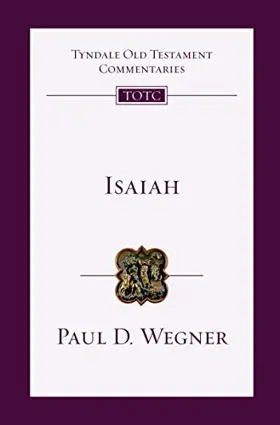

Isaiah
in Tyndale Old Testament Commentaries
Pages
512
Publisher
IVP Academic
Published
7/6/2021
ISBN-13
9780830842681
No other prophetic book rivals Isaiah's clear message, powerful imagery, and confident hope in God's future deliverance. The prophet's vision of God's glory and holiness in chapter 6 permeates the whole book, and he never tires of correcting misplaced faith in power or false gods.
In this thorough and accessible Tyndale commentary, Paul Wegner explores the background, structure, and themes of Isaiah. While many scholars divide the book with a gap of about 150 years between chapters 39 and 40, Wegner highlights the unified message of the book, including its three introductions (Is 1:1; 2:1; 13:1) paired with its three refrains (Is 48:22; 57:21; 66:24). Each part illuminates God's glorious plan for his people.
The Tyndale Commentaries are designed to help the reader of the Bible understand what the text says and what it means. The Introduction to each book gives a concise but thorough treatment of its authorship, date, original setting, and purpose. Following a structural Analysis, the Commentary takes the book section by section, drawing out its main themes, and also comments on individual verses and problems of interpretation. Additional Notes provide fuller discussion of particular difficulties.
In the new Old Testament volumes, the commentary on each section of the text is structured under three headings: Context, Comment, and Meaning. The goal is to explain the true meaning of the Bible and make its message plain.
In this thorough and accessible Tyndale commentary, Paul Wegner explores the background, structure, and themes of Isaiah. While many scholars divide the book with a gap of about 150 years between chapters 39 and 40, Wegner highlights the unified message of the book, including its three introductions (Is 1:1; 2:1; 13:1) paired with its three refrains (Is 48:22; 57:21; 66:24). Each part illuminates God's glorious plan for his people.
The Tyndale Commentaries are designed to help the reader of the Bible understand what the text says and what it means. The Introduction to each book gives a concise but thorough treatment of its authorship, date, original setting, and purpose. Following a structural Analysis, the Commentary takes the book section by section, drawing out its main themes, and also comments on individual verses and problems of interpretation. Additional Notes provide fuller discussion of particular difficulties.
In the new Old Testament volumes, the commentary on each section of the text is structured under three headings: Context, Comment, and Meaning. The goal is to explain the true meaning of the Bible and make its message plain.
Reviews
My earlier review was premature based on initial chapters. The more I read, the better it seems. Please forgive (and overlook) my earlier review. The commentary is succinct, well organized, and accessible. It makes an excellent supplement to Oswalt. I should never post a review until I finish the entire book. My sincere apology.
A fairly straightforward explanation without many insightful comments. Recommend the top-rated commentaries by Oswalt, Webb, and Motyer above this one by Wegner. Somewhat disappointing.
This is an excellent and workmanlike commentary on Isaiah. Wegner ably replaces Motyer’s venerable Tyndale volume, and complements Motyer’s classic standalone. At a shade under 500 pages it’s fairly long (as is Isaiah!) but up to date on scholarship and comprehensively readable.

